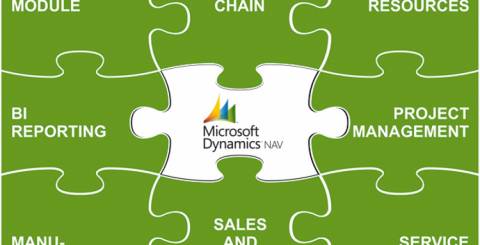Microsoft Dynamics NAV for Fixed Assets: Details

Having already shown the world how good it is for various industries, Microsoft Dynamics NAV is being aggressively used by Finance Professionals to manage Fixed Assets. An ERP to manage Fixed Assets is not that commonly spoken of and this is where the Navision helps break ice by offering special functionalities that help Finance based organizations to manage Fixed Assets successfully and with precision.
1. Arguably the Best ERP Software for Small Business owners, NAV helps control and manage the entire life cycle of one’s fixed assets, which includes everything from acquisitions to disposal in order to maximize the value of one’s business investments.
2. The solution helps view accumulated depreciation through the various common tracking methods in it. This way, companies get to take better decisions regarding the most cost-efficient timing with respect to disposal and asset acquisition.
3. One of the finer Microsoft Dynamics ERP Solutions, NAV helps save time managing changes. Account Groups within the software can be used to make changes to a large group of assets in a single operation or update all fields related to one asset through a single posting.
4. Organizations get to take total control of costs. They get to track and analyze maintenance and insurance costs for every fixed asset so that the whole thing gets budgeted nicely. Also, costs get better understood over the life cycle of the asset.
5. NAV helps get a more comprehensive perspective with respect to Fixed Assets. The Fixed Assets module integrates nicely with General Ledger and other functionalities so that asset holdings can be incorporated into financial assessments to achieve a complete view of one’s overall financial status.
6. The module helps get a quick overview of the organization and also helps monitor depreciation on each asset.
7. Microsoft Dynamics NAV helps maintain a complete record of all your asset information in such a structure that makes most sense. The solution provides all the necessary information to the organization to help record, track, depreciate and dispose of assets at the most opportune time.
8. NAV helps to view and analyze the current status of fixed assets in real time along with other factors such as costs, depreciation and asset transactions. Depreciation Calculations can be automated and so can other standard operations be in order to streamline accounting procedures.
9. The Best ERP Software for Small Business owners facilitates easy and customizable asset tracking, where the assets can be tracked on the basis of description, location and number for which default fields can be set and custom fields be created.
10. NAV being one of the more powerful Microsoft Dynamics ERP Solutions provides for powerful Reporting and Analysis, helping determine the level of detail required in one’s fixed asset report, helping find out whether the assets appear as a single entity or as a set of components and helping generate simulation reports that help find out how the book value and depreciation will develop over time.
11. Navision helps maintain cost monitoring. The solution makes it easy to find out the cost of assets, record routine maintenance on assets and also find out the cost of insurance coverage which includes annual premiums.
12. Navision integrates seamlessly with Microsoft Office System Programs. It helps work more productively as asset data can easily be exported and analyzed into familiar applications such as Excel and Word.
13. Every bit of information related to a fixed asset which includes asset account, lease, insurance, user-defined data, specific transactions etc. can all be viewed through asset review and analysis.
14. The solution facilitates standard depreciation methods such as straight line, declining balance and accelerated depreciation and helps define required depreciation conditions well.
Similar Articles
Decentralized Finance (DeFi) has transformed how users earn passive income through blockchain-based financial systems. Among its most popular use cases,
Staying organized can feel like a full-time job. Between meetings, deadlines, and personal commitments, it’s easy to get overwhelmed.
Choosing the right GIS mapping software depends on what you need to accomplish. Some platforms cater to developers who want to build custom applications from scratch.
For data intensive industries such as insurance, the global business landscape is undergoing a profound transformation. Thanks to all the relentless technological innovation, this shift presents both significant challenges and unparalleled opportunities for modernization of the insurance sector.
Organizations are always looking for newer technologies to aid their operations. So, this hunt revolves around solutions that offer not only agility and scalability but are also cost-effective.
Not long ago, the idea of multiple AI agents working together, each with a specific role, collaborating to solve problems, felt like science fiction.
In today’s data-driven world, choosing the right business intelligence (BI) platform can make or break your organization's analytics success.
We all know that companies today are no longer limited to a single physical location. Work processes are also no longer strictly isolated.
It is neither secret nor news that the mind-boggling pace of digital transformation around us has totally altered consumer expectations.









